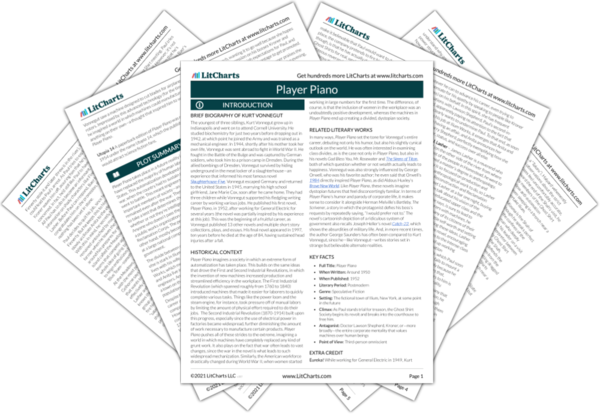AI ToolsNew
Tools to make learning and teaching easier
Player Piano Study Guide |
Next
Summary
|
Welcome to the LitCharts study guide on Kurt Vonnegut's Player Piano. Created by the original team behind SparkNotes, LitCharts are the world's best literature guides.

Eureka! While working for General Electric in 1949, Kurt Vonnegut saw a machine designed to cut blades for airplane rotors. Impressed by this advanced technology (for the time), he imagined a world in which machines could manufacture anything on their own—a thought that inspired him to write Player Piano.
Utopia 14 A paperback edition of Player Piano was released in 1954 under the name Utopia 14, which the publisher thought would attract science fiction fans.